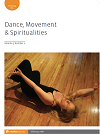
Full text loading...

The experience presented here draws on my MA Dance and Somatic Wellbeing final study. Due to global pandemic restrictions, this was a solo and single witnessed inquiry into the resonance, in my body–soul experience, of traditional dances from my native land, centred on deepening into a ‘return’ to the homeland within. This perspective hoped to contribute to the field of somatic movement practices in relation to traditional dances as embodied inter-, intra- and trans-personal experience and in contexts removed from their place of origin. Through the emerging themes, a story unfolded, of unanticipated archetypal and imaginal phenomena, a rich, embodied and spiritual experience encompassing individual and collective rooting and transpersonal significance. These are, therefore, central to this writing and presented with extracts from journaling, video recordings and drawings by both dancer and witness, as samples of the lived material from which they arose.

Article metrics loading...

Full text loading...
References


Data & Media loading...

Publication Date:
https://doi.org/10.1386/dmas_00033_1 Published content will be available immediately after check-out or when it is released in case of a pre-order. Please make sure to be logged in to see all available purchase options.